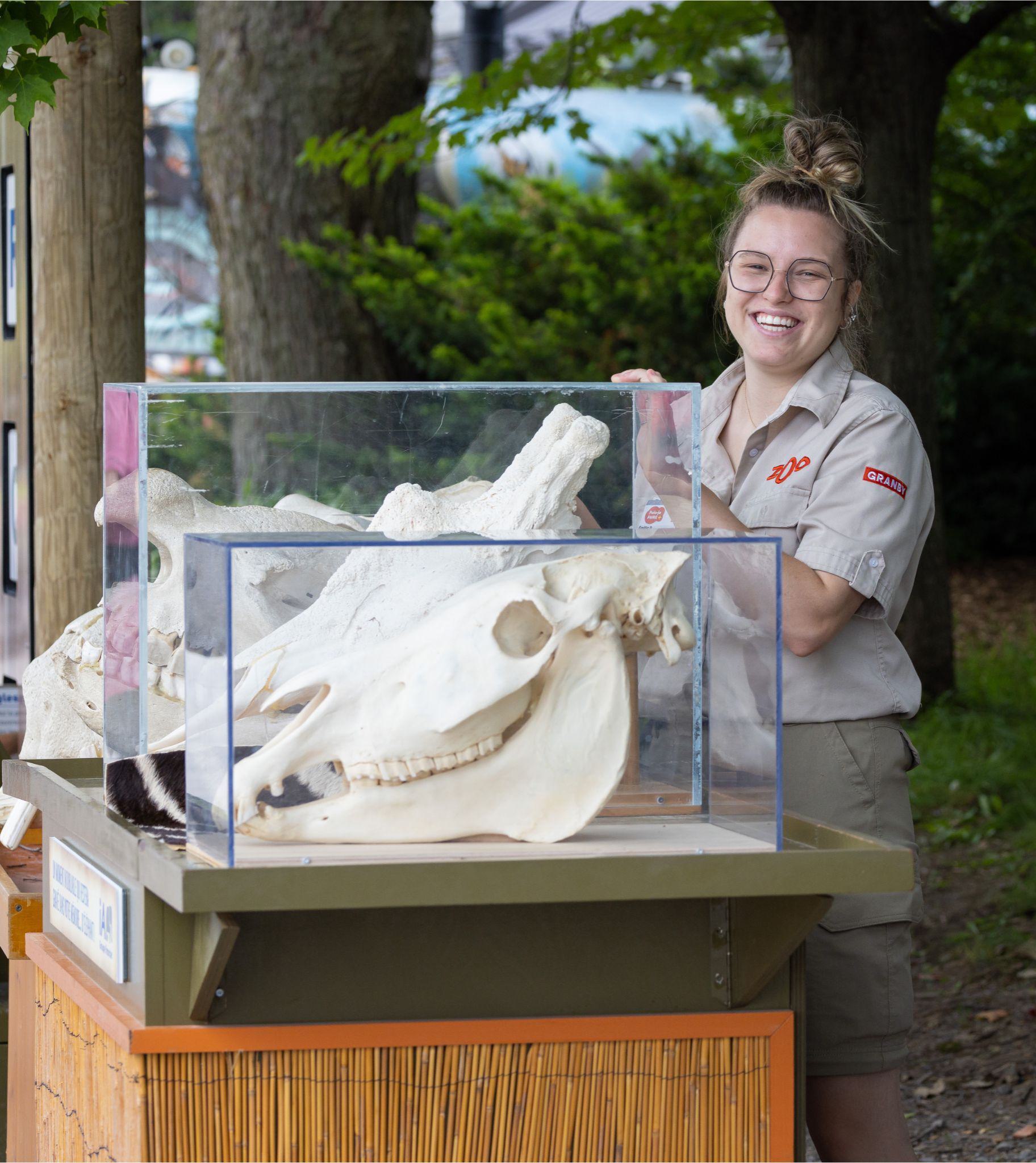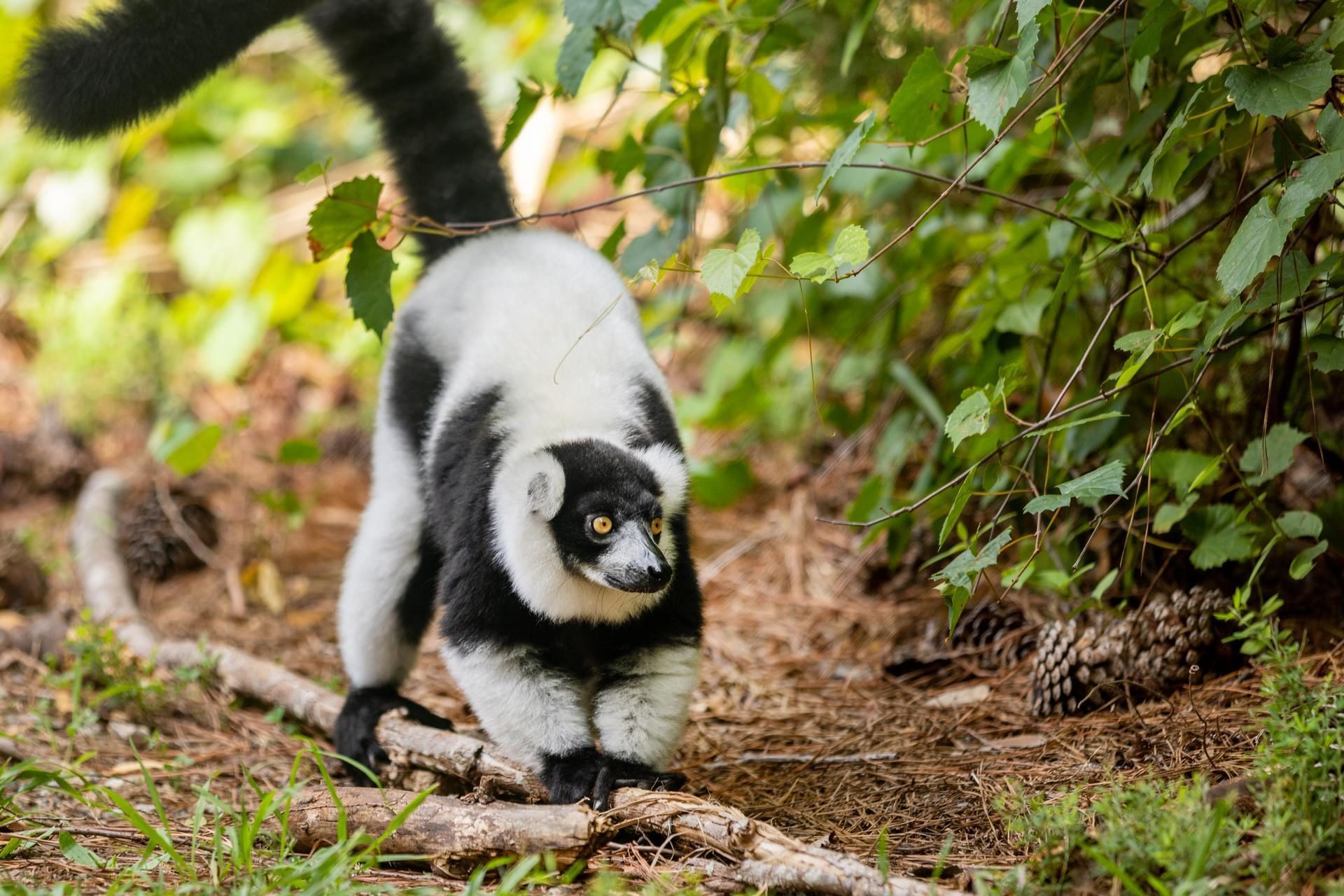
Black-and-white ruffed lemur
Distribution
Madagascar
Diet
Frugivore
Habitat
Tropical rainforests
Latin Name
Varecia variegata
IUCN conservation status
- Extinct
- Critically endangered
- Endangered
- Vulnerable
- Near threatened
- Least concern
Considered one of the largest lemurs, this magnificent primate is threatened with extinction
Interesting informations
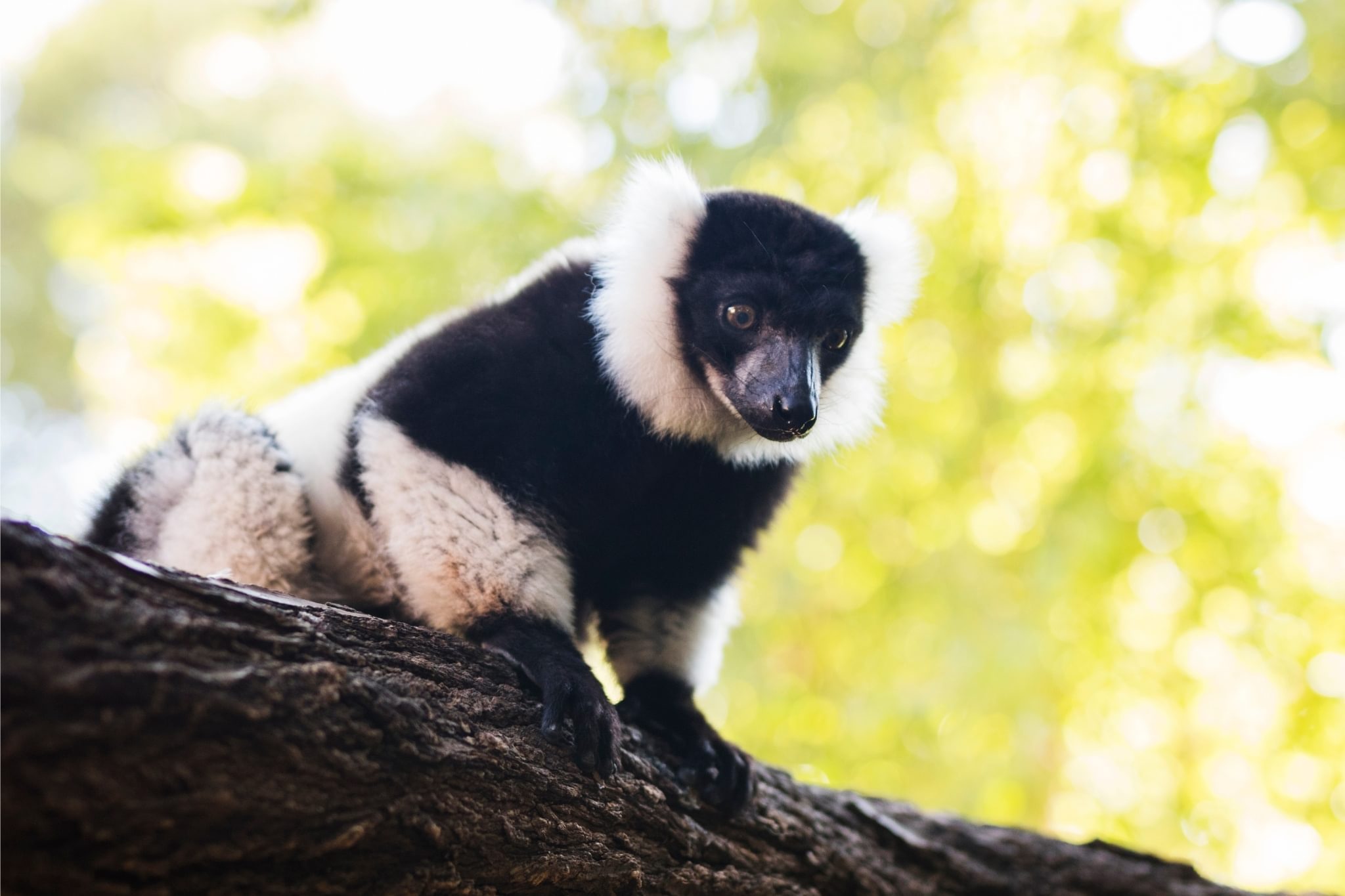
A Diet Consisting Mainly of Fruits and a Few Insects
Fruits make up more than 90% of its daily diet. It supplements this with leaves, nectar, seeds, and mushrooms. It also eats a few insects. Crepuscular, it is most active in the morning and early evening. When it is not feeding or interacting with its peers, it spends its time resting in the canopy.
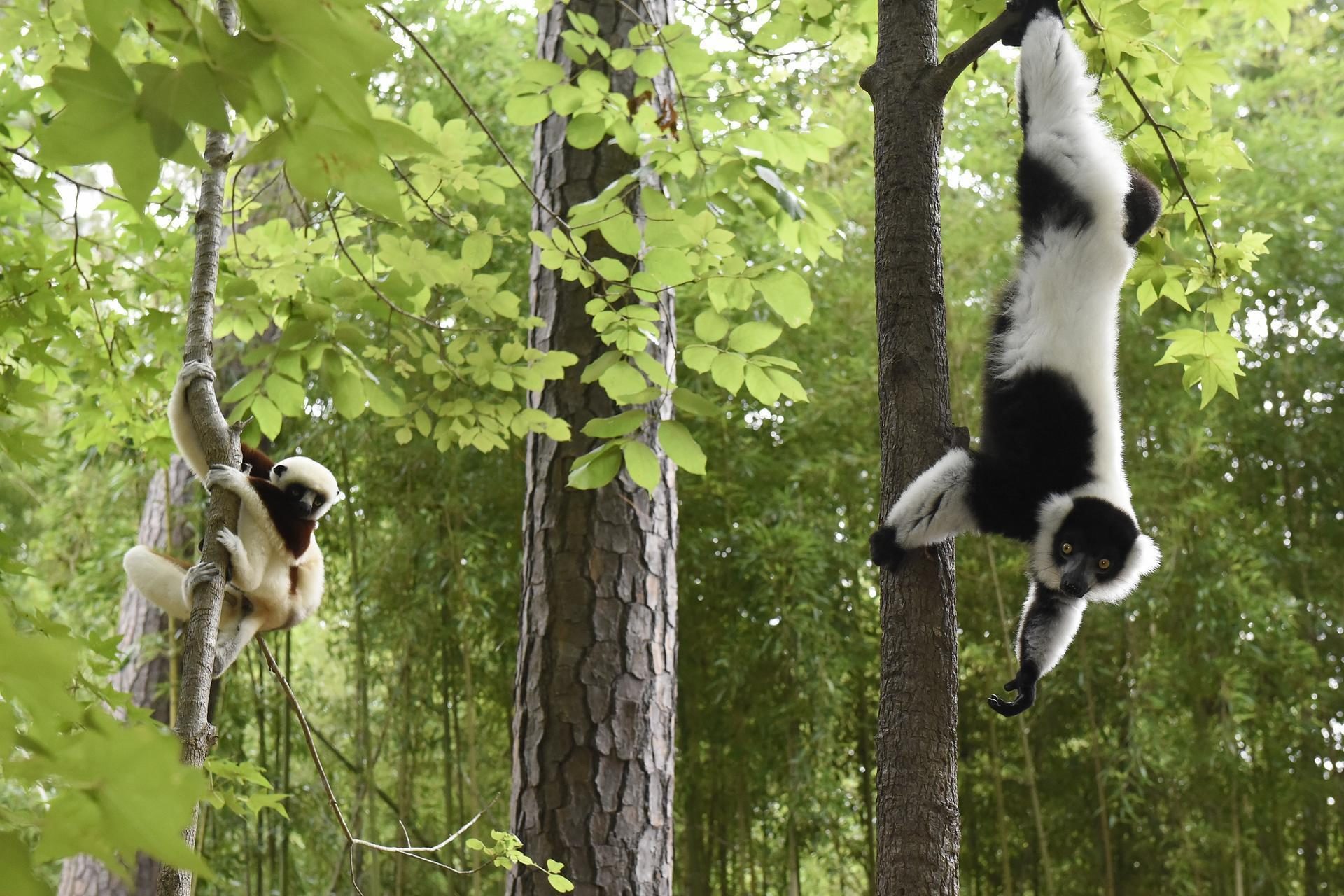
A Large and Slender Body That Serves It Well When Moving Between Branches
Its large, powerful legs end in prehensile hands with long fingers. Its dense black-and-white fur allows it to blend perfectly into the play of light and shadow in the canopy: varecia lemurs rarely come down to the ground. To grab a fruit, they are capable of hanging by their hind legs.
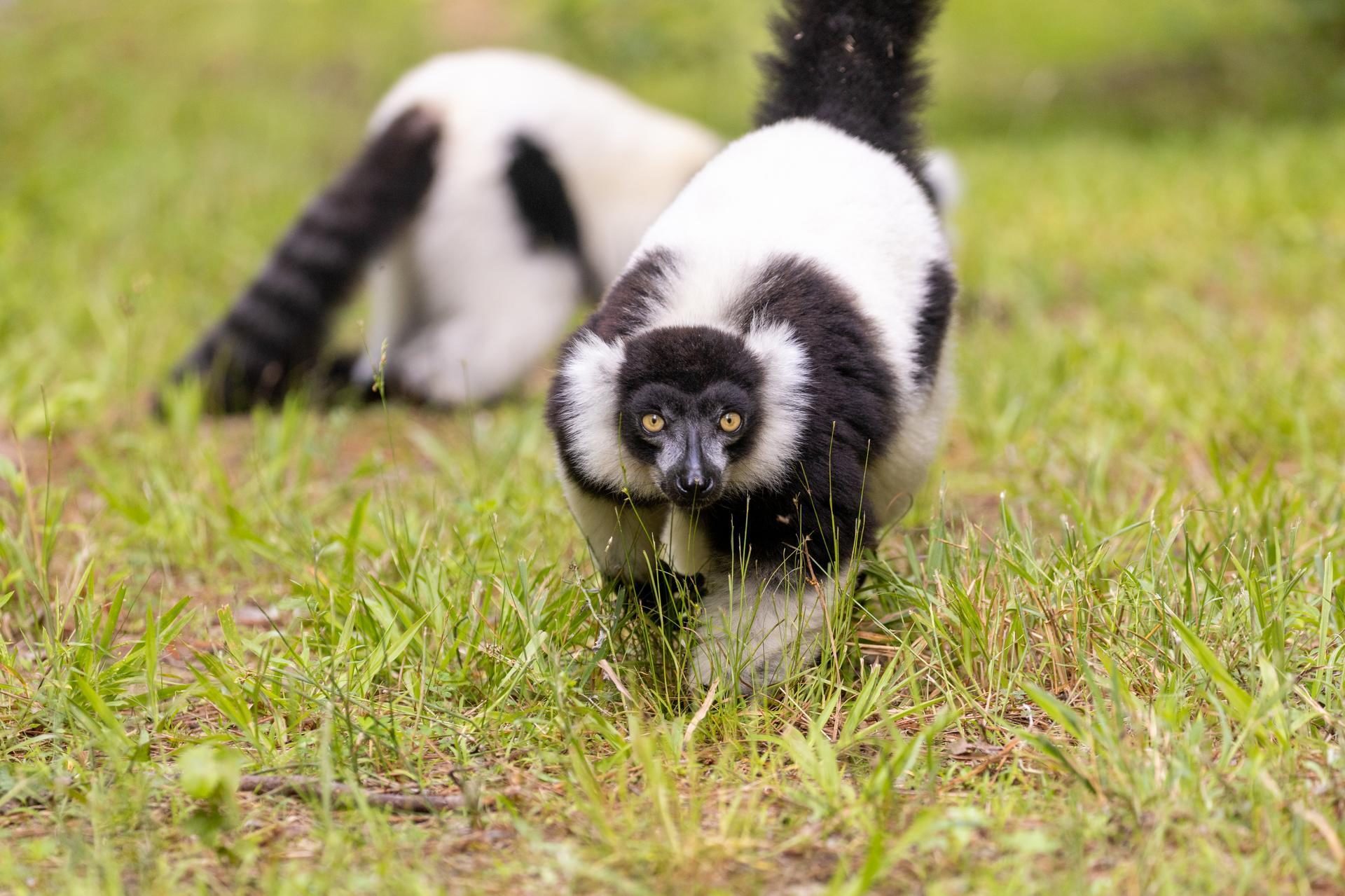
In Pairs or in Groups, Individuals That Are Hard to See but Very Noisy!
Because they spend most of their time in the trees, varecia lemurs are hard to spot. However, their barking calls, used to mark their territory, can be heard from over a kilometer away. These lemurs live in pairs or small family groups, depending on available resources. Females are generally dominant.
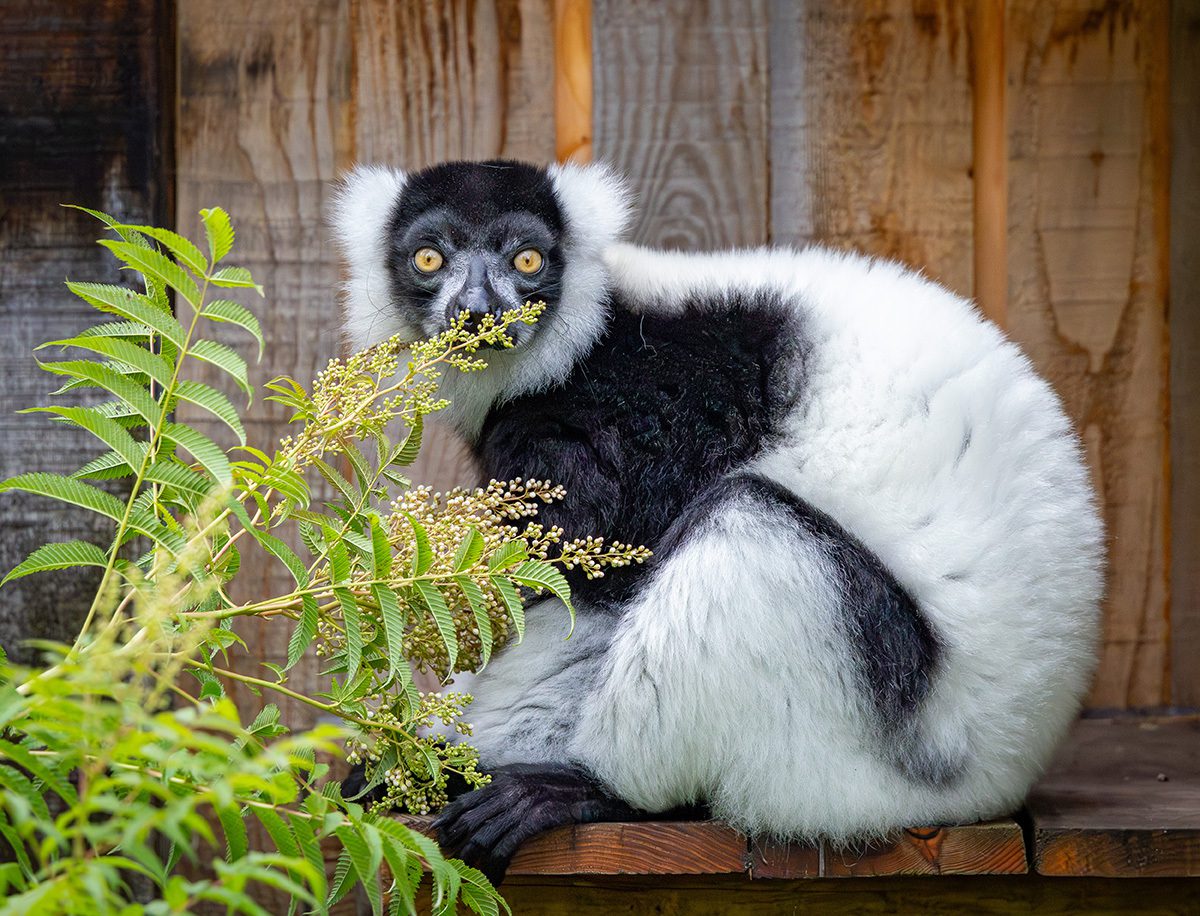
Threats That Weigh Heavily on the Survival Chances of This Species
Like the hundred species of lemurs currently found in the wild, the varecia lemur is exclusive to the island of Madagascar. It is estimated that only between 1,000 and 10,000 of these primates remain in the wild. If nothing is done, the varecia lemur could disappear, as the animal is deeply affected by logging that devastates its natural habitat.
Featured animals
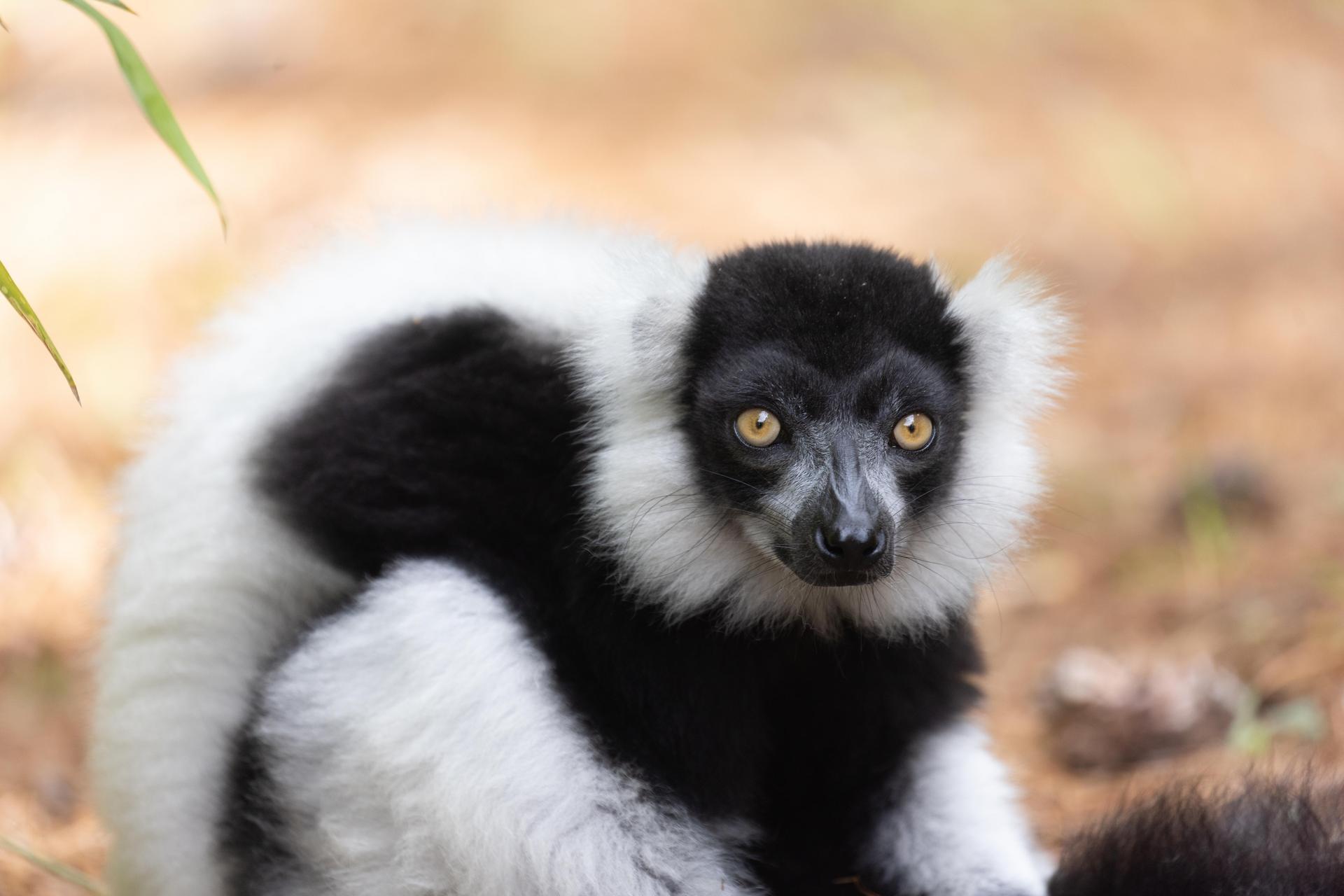
Ripley
Date of birth
May 12, 2020
Weight
8.49 lb / 3.85 kg
Profile
She was born at the Duke Lemur Center in North Carolina, where she lived until her transfer to Granby in April 2025. She shares her habitat with the male Ziggy, as well as two ring-tailed lemurs.
Fun fact
Ripley is the foodie of the pair! She’s always the first to stick her nose in the bowl at mealtime. Since most lemur species form matriarchal societies, Ripley is the one who holds the dominant role.
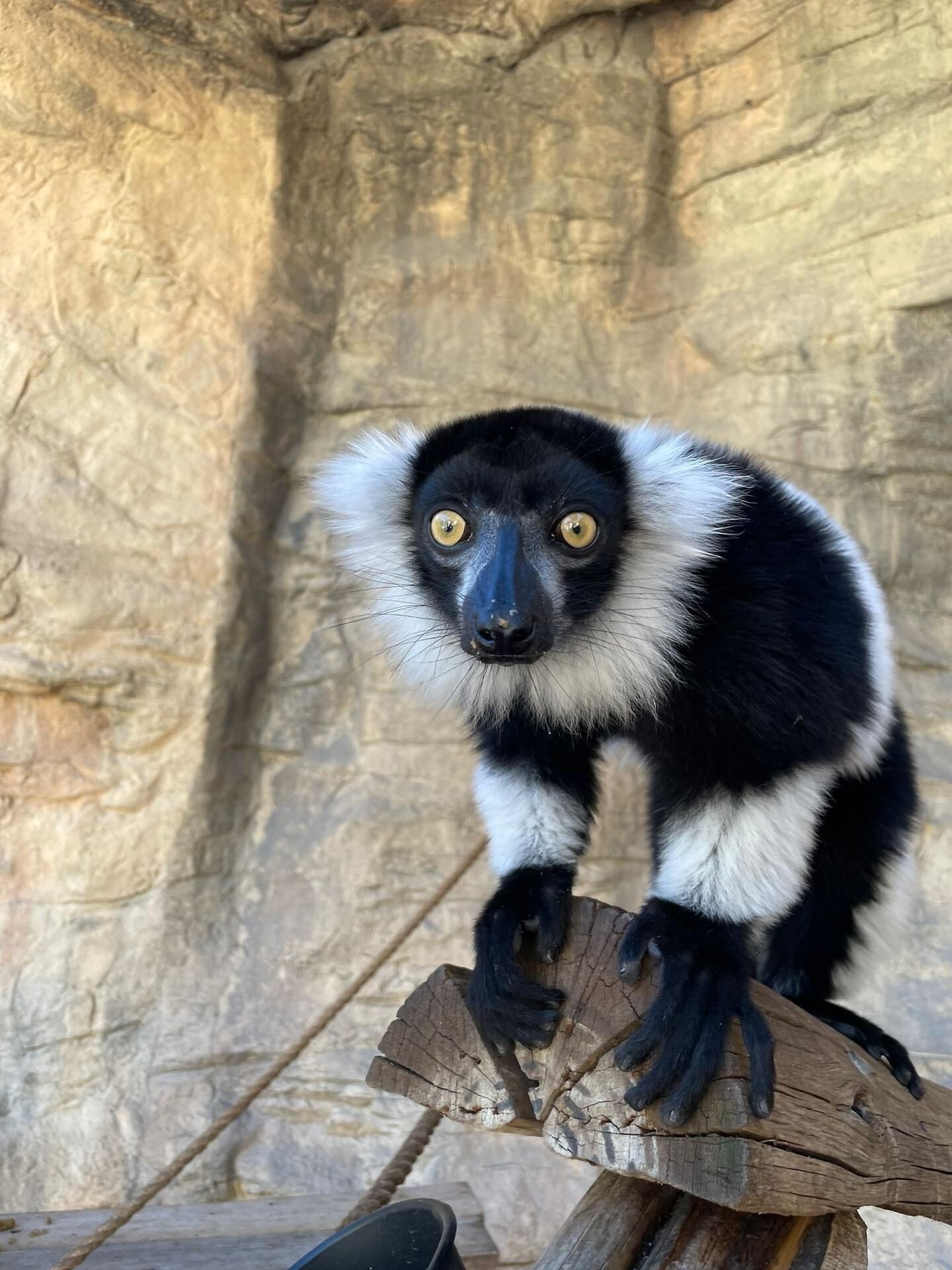
Ziggy
Date of birth
May 12, 2020
Weight
9.37 lb / 4.25 kg
Profile
Born at the San Antonio Zoo in Texas, Ziggy came to join the female Ripley following a breeding recommendation. From the quarantine period, the two lemurs seemed to hit it off.
Fun fact
Ziggy is naturally curious: he carefully inspects everything that enters his space, whether it’s a new enrichment item or the technicians’ cleaning tools! In fact, he especially enjoys their presence!




